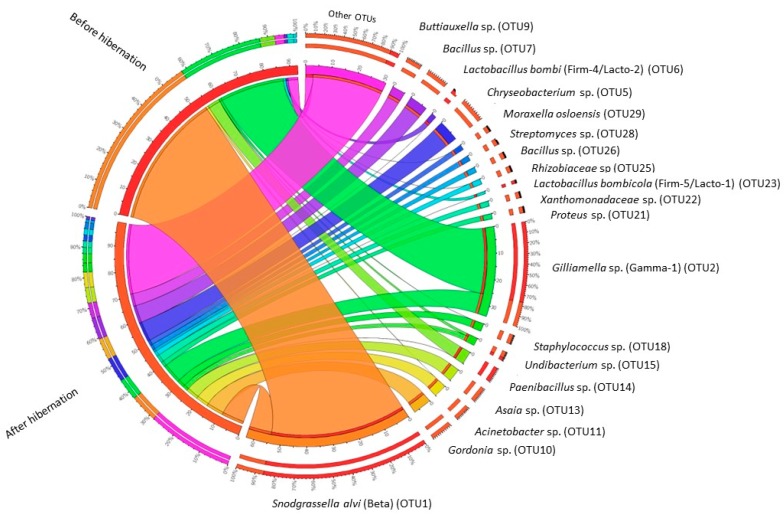Figure 4.
Circular visualization of the occurrence and abundance of gut bacterial operational taxonomic units (OTUs) in bumblebee queens (Bombus terrestris) before (n = 15) and after hibernation (n = 15). Thickness of the ribbon refers to the number of reads assigned to a treatment. The outer ring summarizes the relative abundance of OTUs. Only the most abundant OTUs (i.e., with a mean relative abundance (n = 30) ≥1%) are represented in the figure. All other OTUs were grouped together in “Other OTUs”. OTUs were identified by a BLAST search against type materials in GenBank, and identified up to species level if only one top hit was obtained. Data was parsed with Circos table viewer [38]. Note that the Paenibacillus OTU (OTU14) is not related to Paenibacillus larvae, which is a species that is lethal to honey bee and bumblebee larvae. The highest sequence similarity was found with type strains of Paenibacillus amylolyticus, P. pabuli, P. taichungensis, P. tundra, P. tylopili, P. xylanexedens, and P. xylanilyticus (for all 100% sequence identity on a total of 250 bp).

